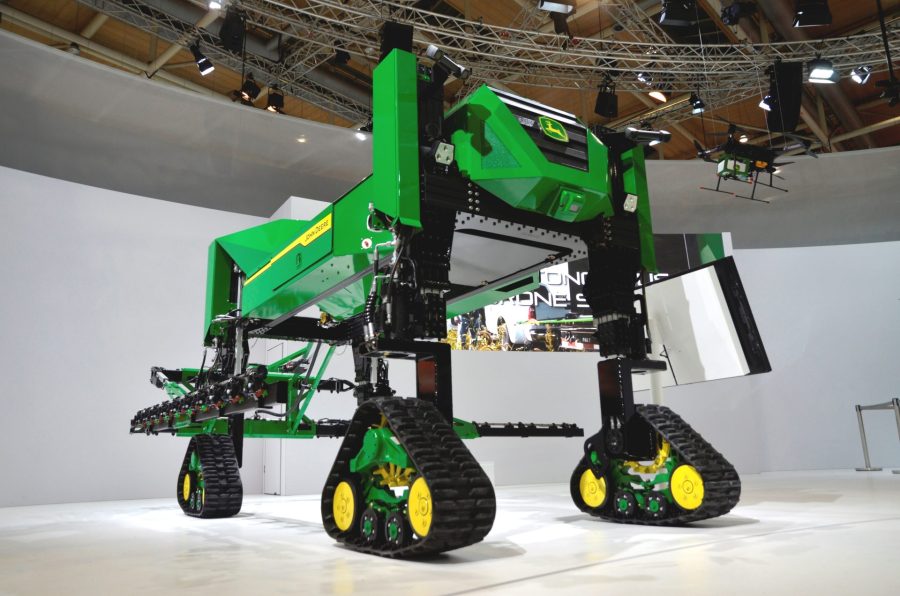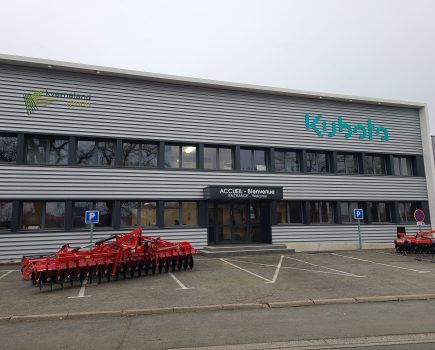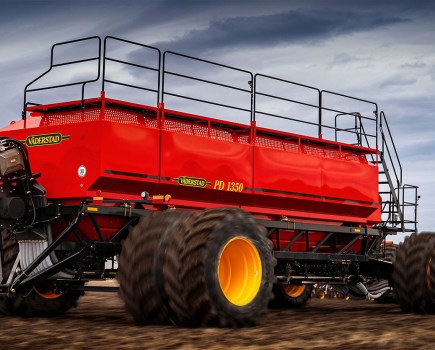The future technology zone on John Deere’s Agritechnica stand provided a flavour of some of the autonomous sprayer research projects the company is working on.
Yesterday we detailed some of the company’s autonomous tractor projects. Today, the story continues with autonomous sprayers, the most striking of which was the VoloDrone suspended above the stand.
Developed in cooperation with German firm Volocopter, the first large drone adapted for agricultural use has a diameter of 9.2m, and each of the 18 rotors has its own electric motor.
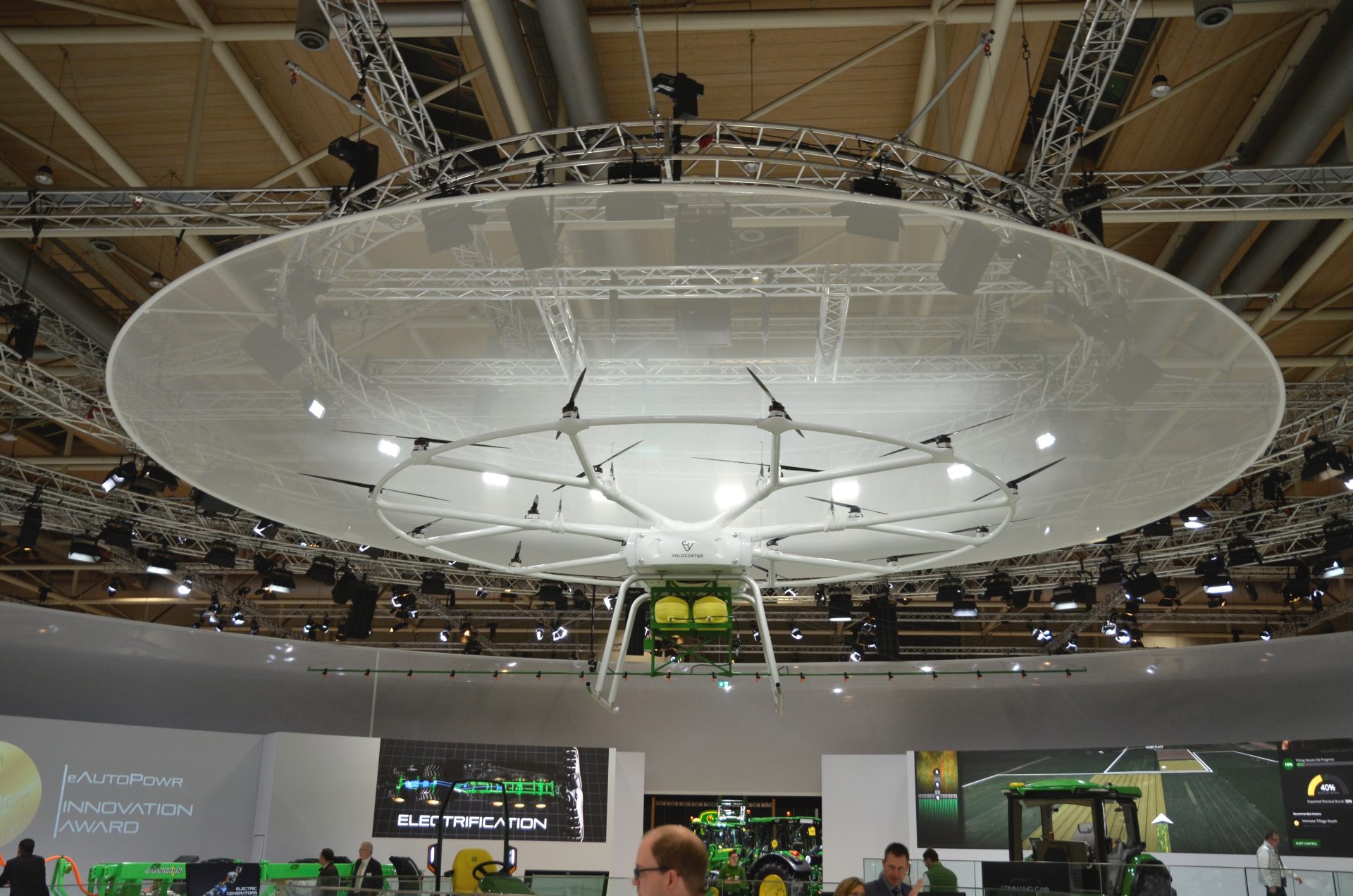
We understand that it has already been field tested (without a sprayer) in Germany, and that one battery charge allows a flight time of up to 30 minutes. Recharging time is approx. one hour and three battery sets will be needed (5 mins to swap) to continuously fly the drone.
Operated remotely or automatically on a pre-programmed route, the frame can carry a maximum payload of 250kg, which could include a fertiliser spreader or seed hopper.
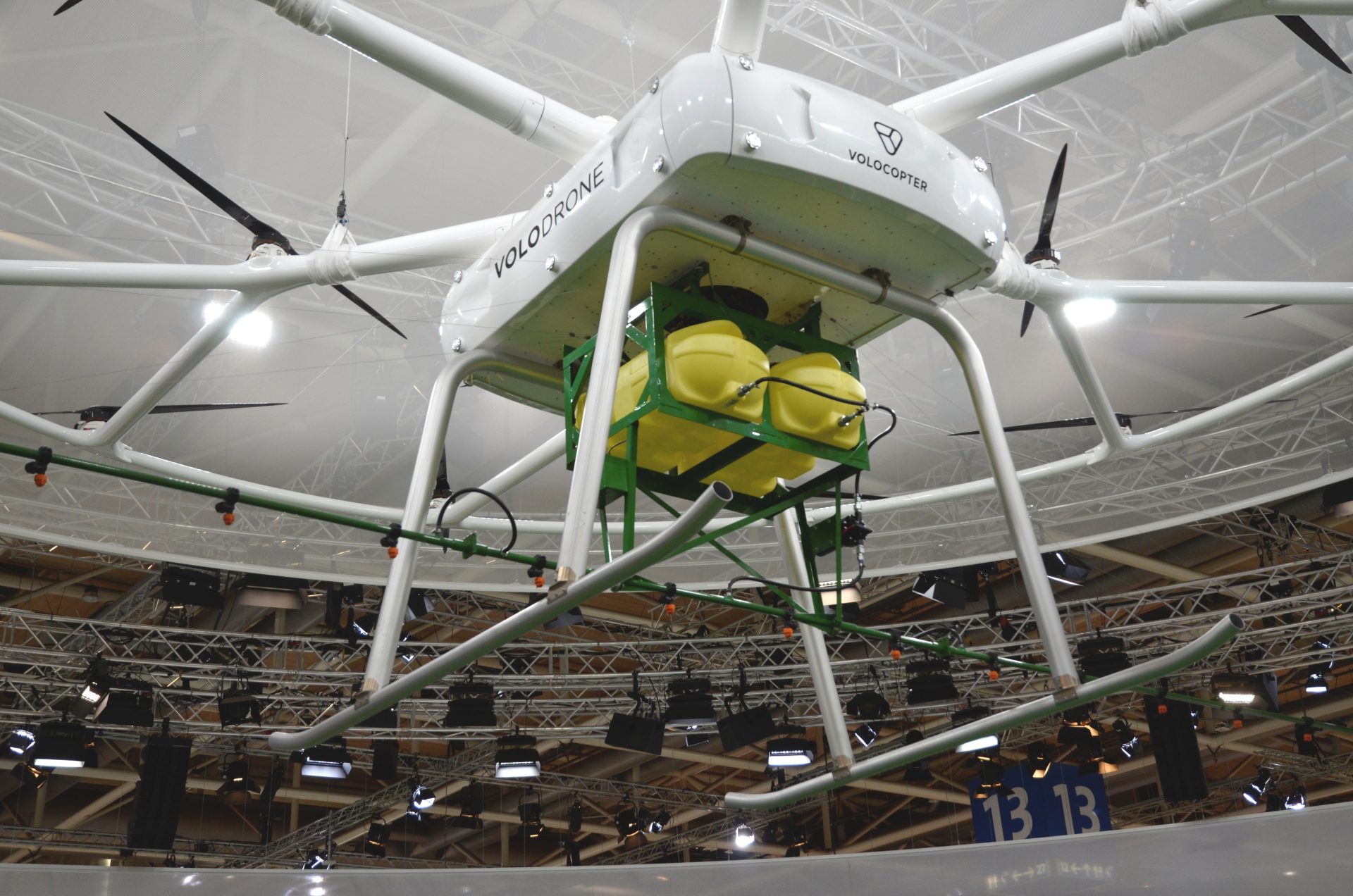
At the show, it was equipped with two 60-litre liquid tanks, a pump and a 10.0m spray boom. The demonstrator model is ready for its first field flight, and to see whether it can cover the suggested 6ha/hr.
Continuing with drones, but then with smaller 25kg ones, the autonomous spraying system developed over the past two years at Des Moines in the US, is interesting.
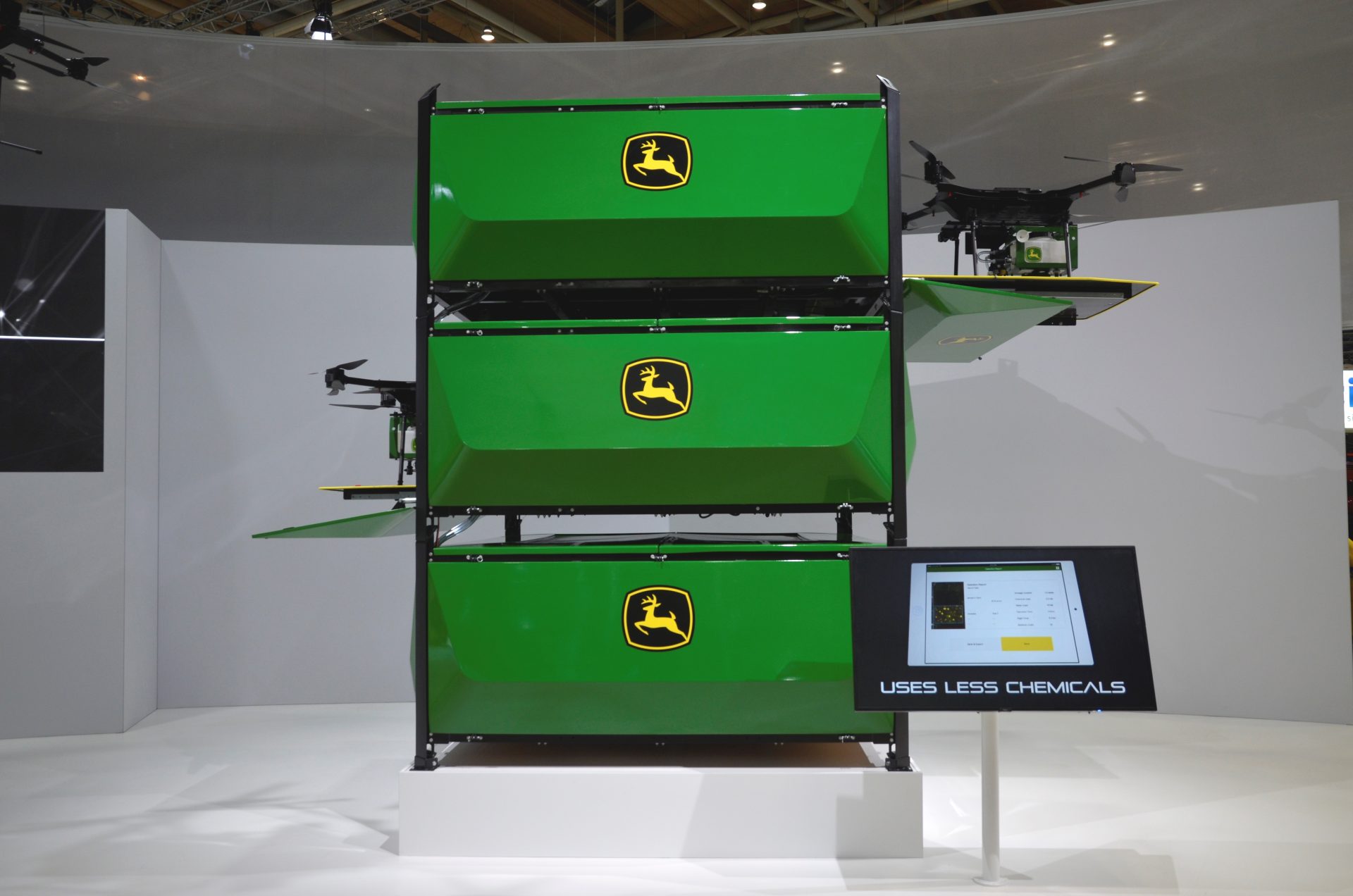
The multiple drones used with the system are housed in a test box. We understand that John Deere has developed numerous versions, but the one at the Agritechnica is the best looking.
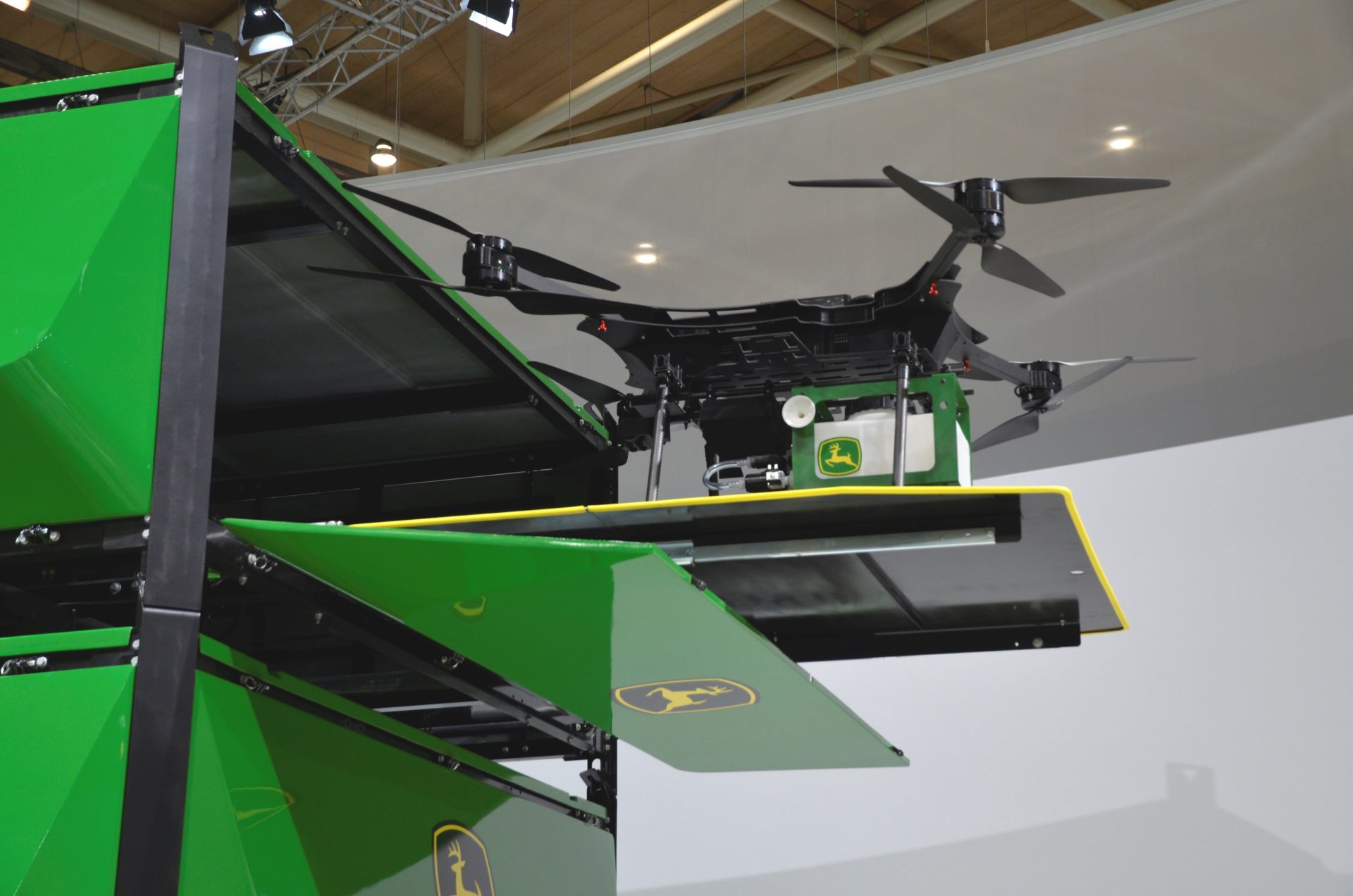
When entering a field a scout drone is released to scan weeds from the air. When it returns to the test box, weed information is shared (anything from three minutes to two hours) with other drones, all of which like the first one can scout and spot spray individual weeds. The base of the structure of the two-drone system at Agritechnica contains a 1,000-litre water tank and three 60-litre chemical tanks.
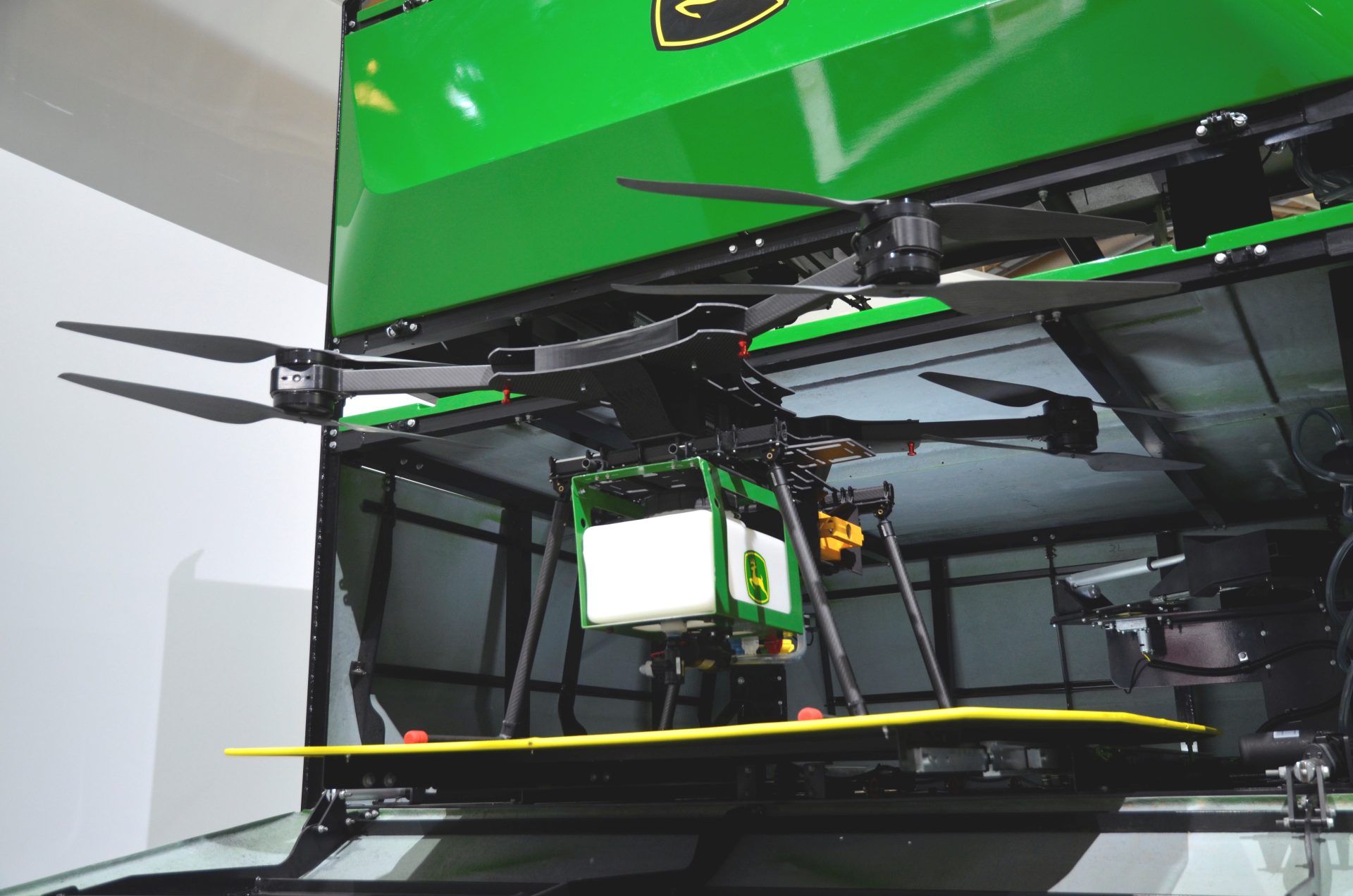
Flight time with a fully charged battery is 30 minutes, and when it needs charging, or the drone’s 10.6-litre tank needs a top up, it automatically returns to the test box. The landing pad retracts automatically and battery swapping and tank filling are also automatic.
All current work has been done with water at a John Deere test ground in field plots of maize (corn) and cotton. Claimed benefits include the precise application of pesticides, a significant reduction in the volumes used, and spraying from the air allows crops to be treated on wet land without damage.
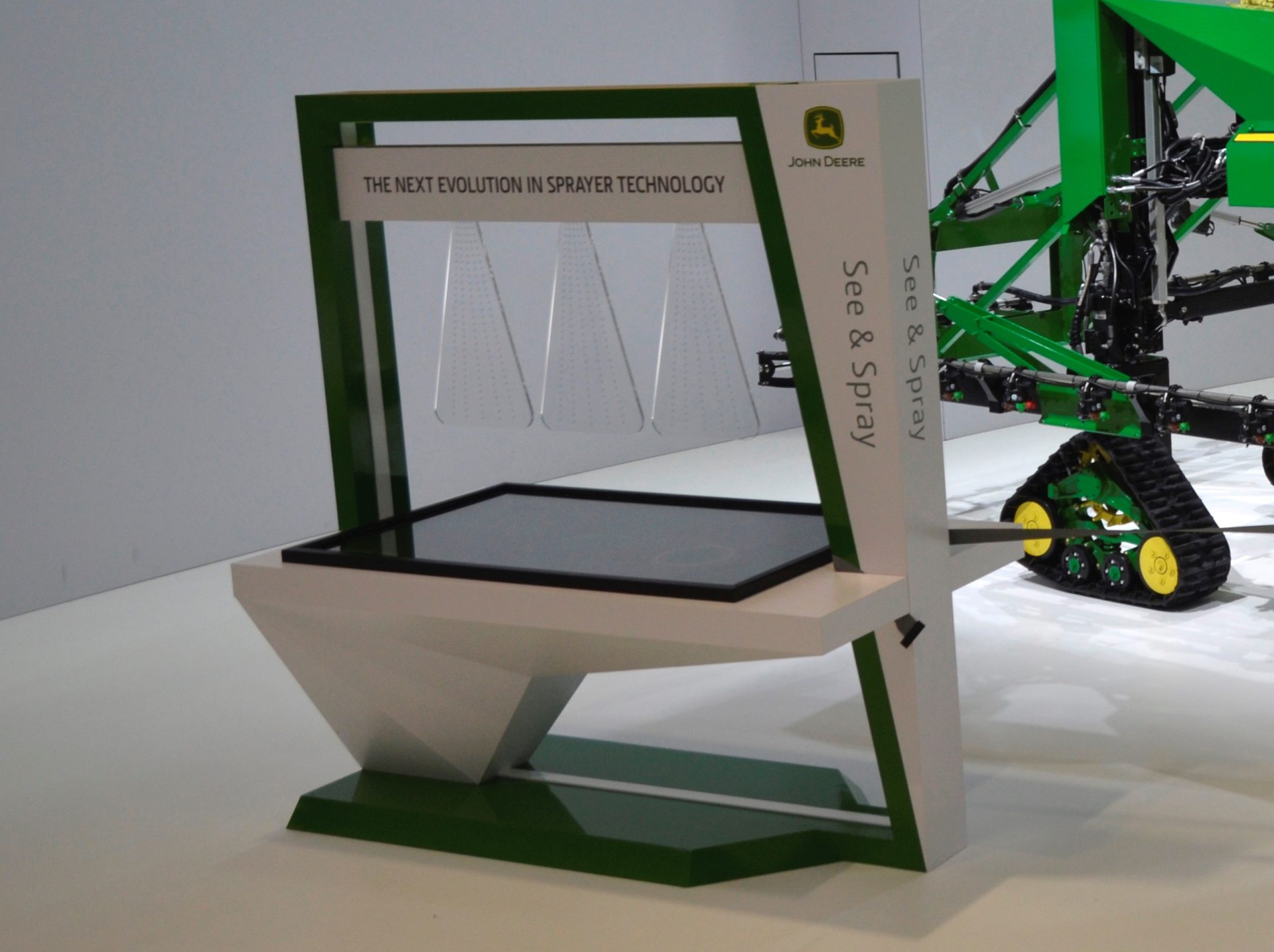
On the artificial intelligence front, Blue River Technology, a John Deere company, showed see and spray technology, with high-resolution cameras capturing 20 images per second.
Based on the images and artificial intelligence, the system recognises the difference between crop plants and weeds so that individual plants can be specifically treated. With this new generation of weed control, the use of pesticides can be greatly reduced.
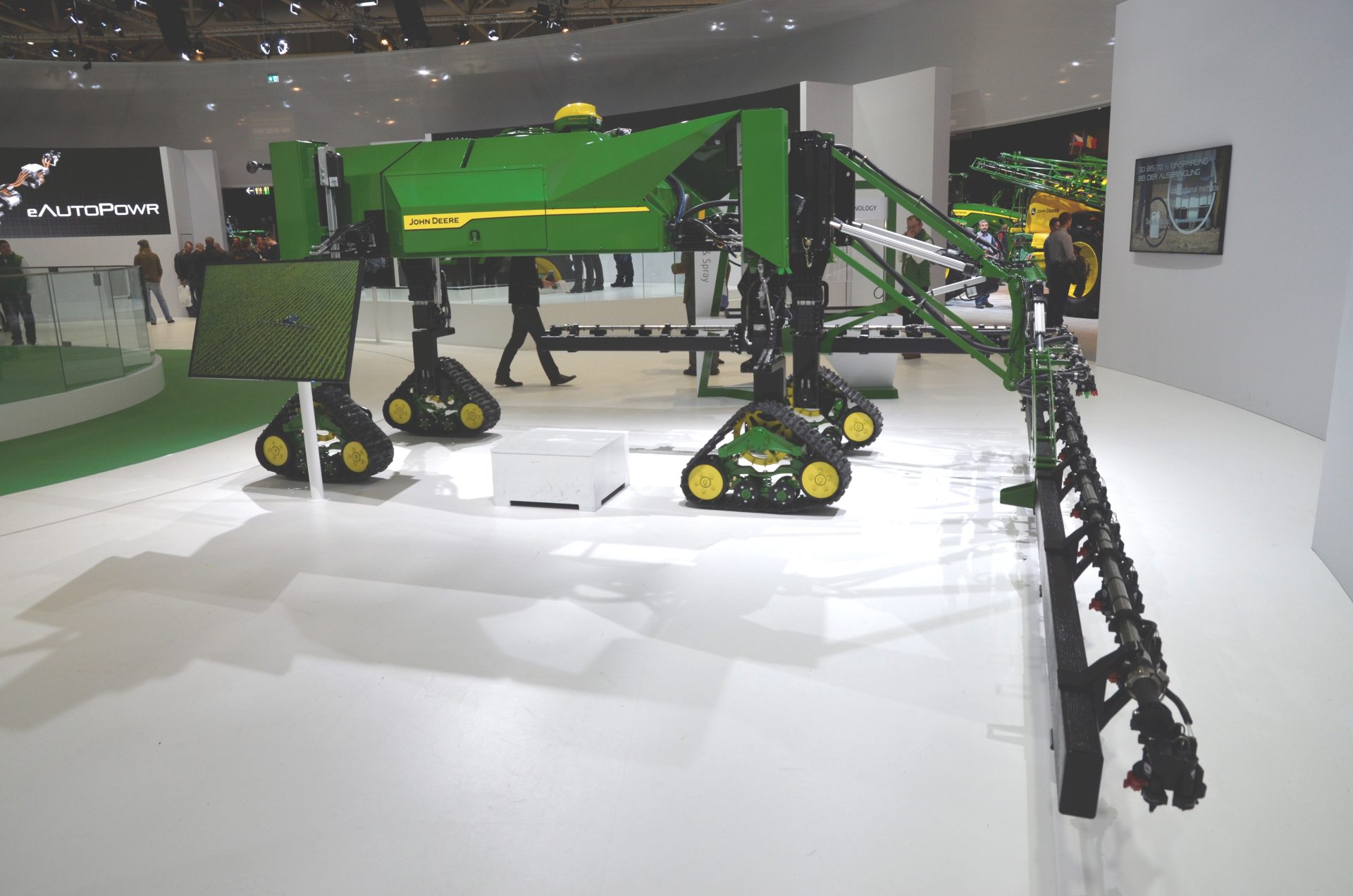
Of all nine autonomous projects in the future technology zone, one of the most photographed was the autonomous self-propelled sprayer.
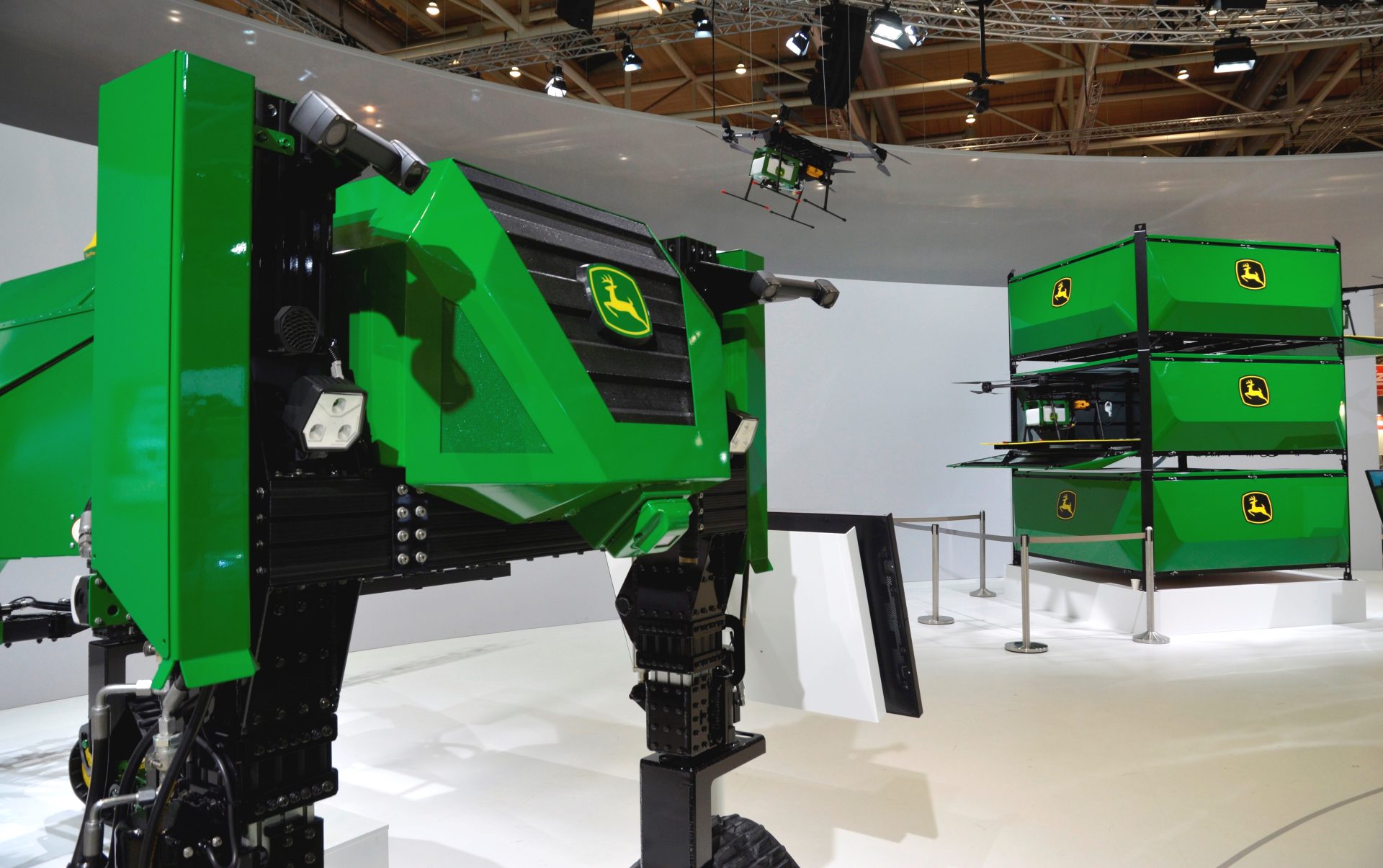
The result of 3-4 years of R+D so far, the technical details could change, but the version at Agritechnica had a 37hp petrol engine, 560-litre spray tank, 9.0m spray boom and a barrage of sensors and cameras.
Developed at Des Moines, it is envisaged that two or three of the autonomous units could work alone, or that one could be used alongside a larger ‘manned’ sprayer.
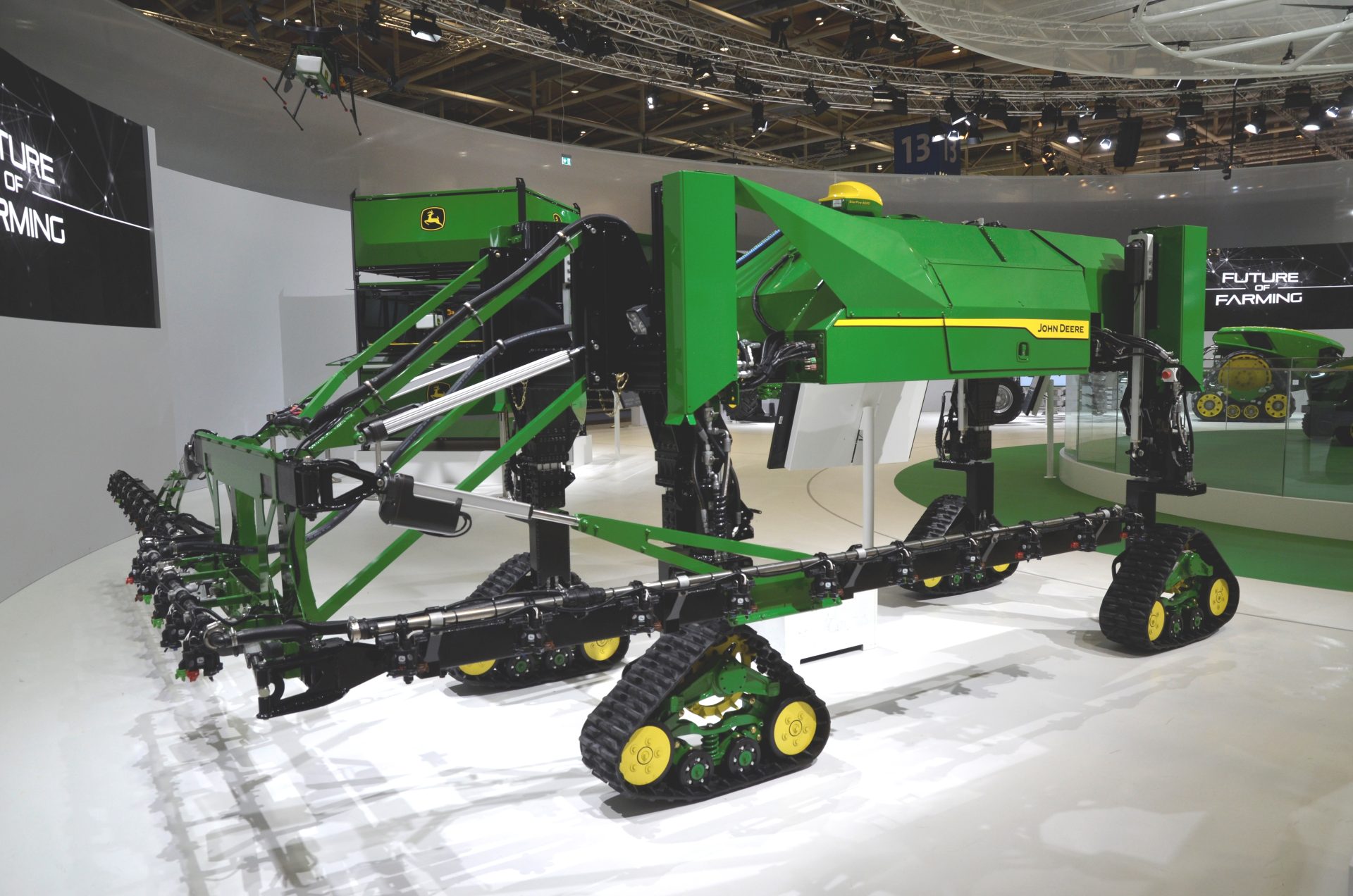
Driving through four rubber tracks gleaned from an ATV, the autonomous vehicle offers 4ws, has a maximum ground clearance of 1.9m and weighs around 2.7t. It has not yet been tested on a farm, but as soon as the show ended, the vehicle was shipped back to North America for more internal tests.
The burning question now is will any of the autonomous tractor prototypes from yesterday’s story, and the sprayer prototypes from this one, ever make it to the production stage? This question is difficult to answer but legislation and farmer acceptance are seen as two crucial factors.
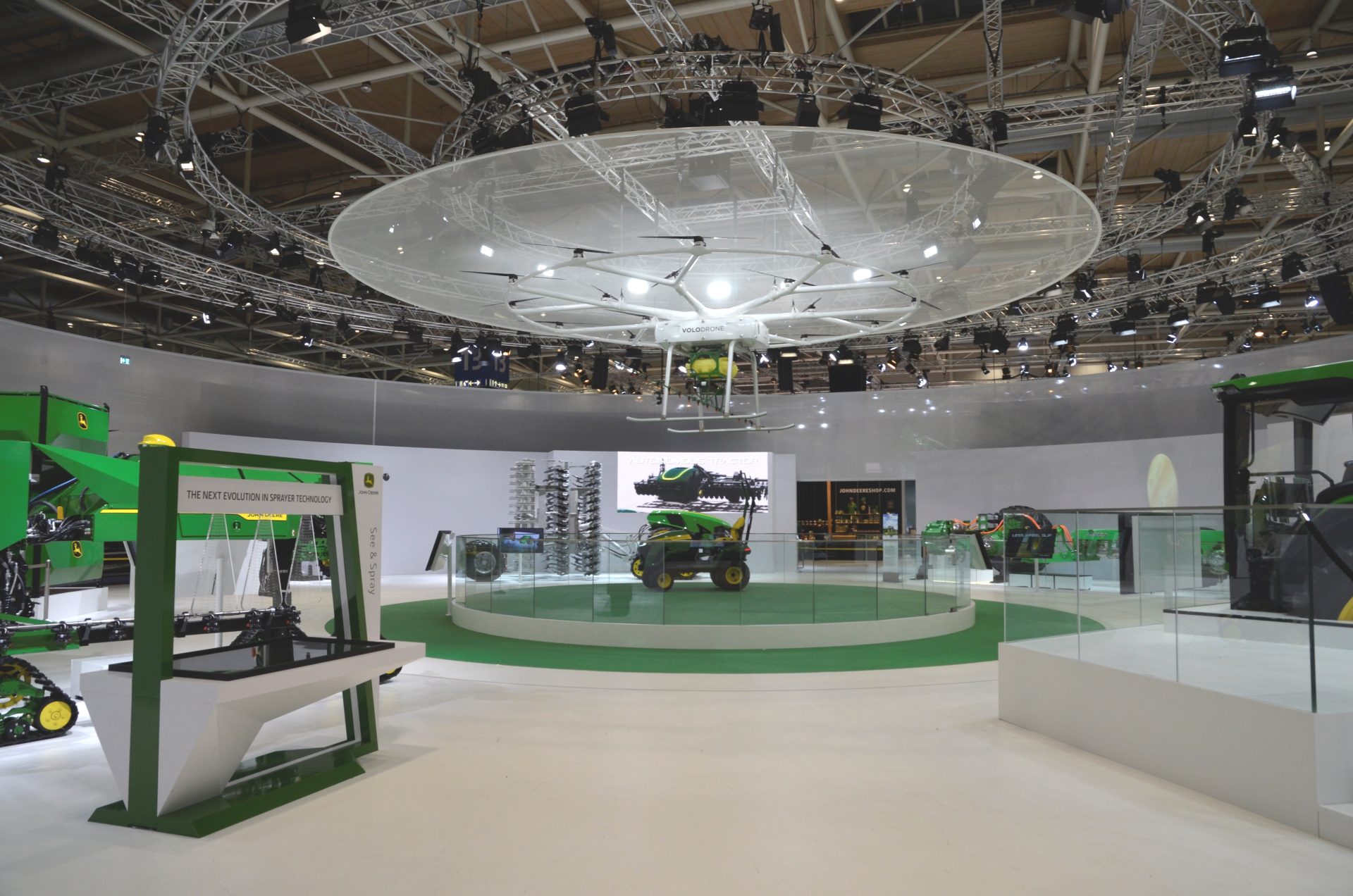
Also, feedback from John Deere research staff at the future technology zone is that safety is paramount. You can be sure that the company is working hard to ensure that all its autonomous systems are just that.
Finally, Agritechnica certainly lived up to its reputation as an innovation launchpad, and while Steyr and Massey Ferguson each showed a concept tractor, John Deere is the first to go public with so many different prototypes.
Let’s hope the company repeats the exercise at the next show in November 2021 and that some of the other big names in the business are prepared to reveal more of some of their research projects.
Footnote: Special thanks to John Deere staff in the future technology zone for the assistance and permission to photograph the prototypes before the crowds arrived.

